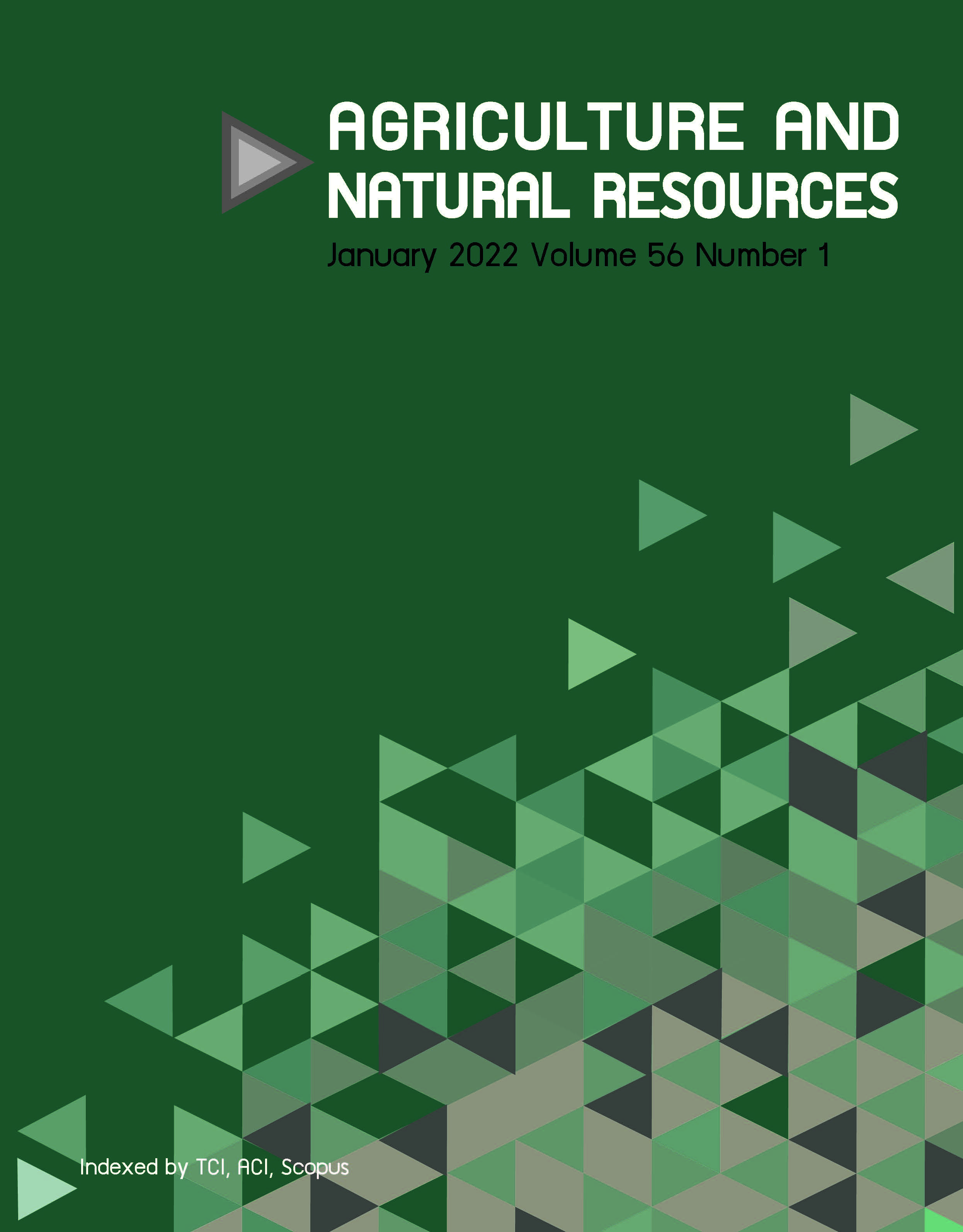Capability of cassava model to determine biomass of two branching types at different plant spacings
Keywords:
Biomass, CSM–MANIHOT–Cassava, DSSAT, Planting, SimulationAbstract
Importance of the work: Evaluation of the Cropping System Model (CSM)-MANIHOT-Cassava provides the opportunity to apply for determining the suitable plant spacings.
Objectives: This research aimed to show potential of the CSM-MANIHOT-Cassava in simulating biomass of two cultivars using different plant spacings.
Materials & Methods: The Rayong 9 (RY9, non-branching) and Kasetsart 50 (KU50, branching) cultivars were planted at spacings of 120 cm × 80 cm (10,418 plants/ha) and 120 cm × 100 cm (8,331 plants/ha). The data recorded were soil properties before planting, daily weather parameters, crop management details and crop dry weight.
Results: The average values for the index of agreement and for the normalized root mean square error (nRMSE) for biomass accumulation were 0.91 and 34.1%, respectively. For biomass at final harvest, the average nRMSE value was 31.0%. However, the results from both the simulation and field experiment identified the KU50 cultivar with spacing at 120 cm × 80 cm as desirable treatment for total crop dry weight. Model application in different scenarios showed that a wider plant spacing tends to produce a higher simulated storage root dry weight per area under irrigated growing conditions, while a narrower plant spacing tends to give higher simulated crop productivity under rainfed conditions.
Main finding: This research demonstrated the possibility of applying the CSM-MANIHOT-Cassava as an informative tool to help identify a suitable plant spacing for cassava.
Downloads
Published
How to Cite
Issue
Section
License
Copyright (c) 2022 Kasetsart Universityonline 2452-316X print 2468-1458/Copyright © 2022. This is an open access article under the CC BY-NC-ND license (http://creativecommons.org/licenses/by-nc-nd/4.0/),
production and hosting by Kasetsart University of Research and Development Institute on behalf of Kasetsart University.







